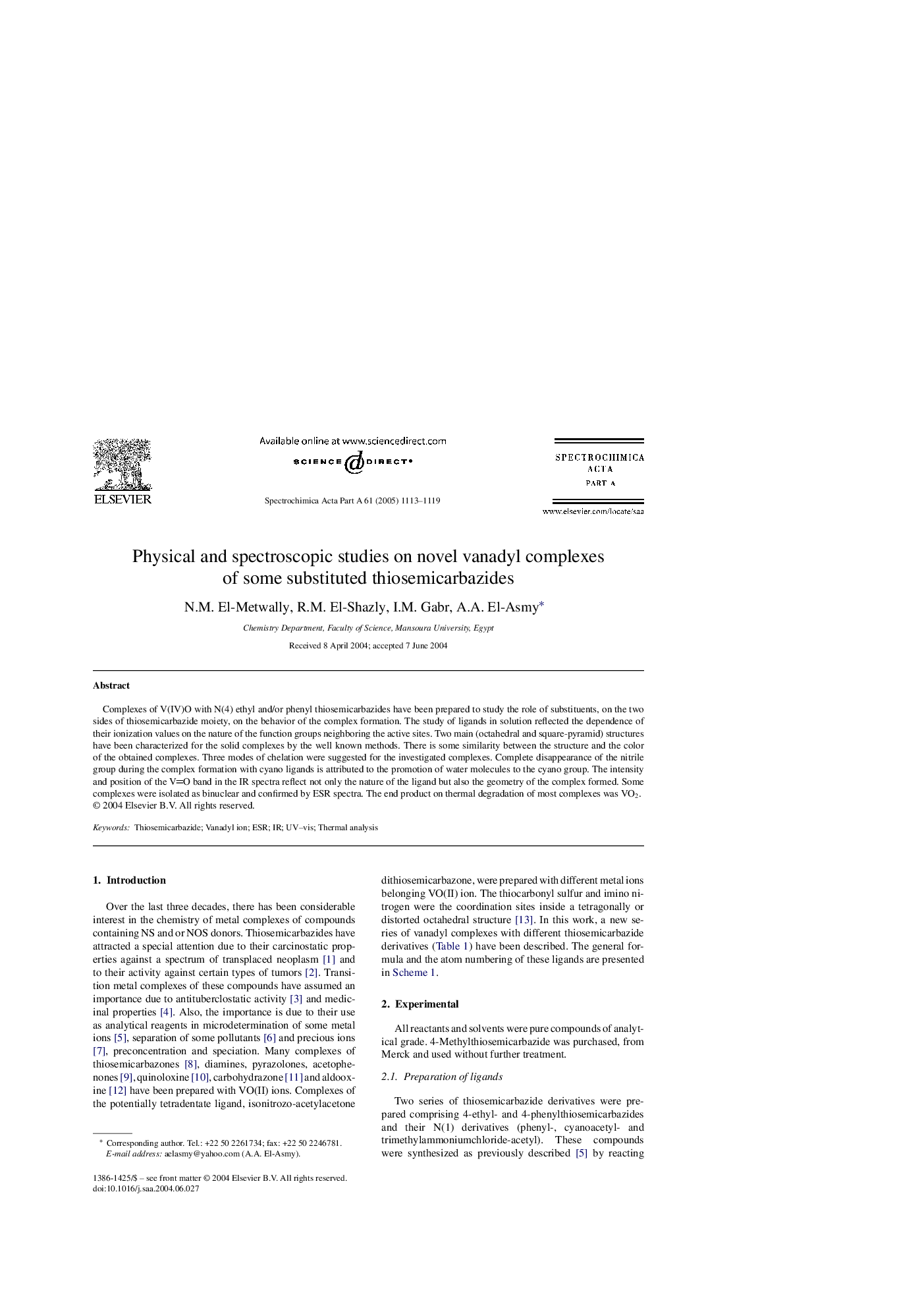| Article ID | Journal | Published Year | Pages | File Type |
|---|---|---|---|---|
| 10557397 | Spectrochimica Acta Part A: Molecular and Biomolecular Spectroscopy | 2005 | 7 Pages |
Abstract
Complexes of V(IV)O with N(4) ethyl and/or phenyl thiosemicarbazides have been prepared to study the role of substituents, on the two sides of thiosemicarbazide moiety, on the behavior of the complex formation. The study of ligands in solution reflected the dependence of their ionization values on the nature of the function groups neighboring the active sites. Two main (octahedral and square-pyramid) structures have been characterized for the solid complexes by the well known methods. There is some similarity between the structure and the color of the obtained complexes. Three modes of chelation were suggested for the investigated complexes. Complete disappearance of the nitrile group during the complex formation with cyano ligands is attributed to the promotion of water molecules to the cyano group. The intensity and position of the VO band in the IR spectra reflect not only the nature of the ligand but also the geometry of the complex formed. Some complexes were isolated as binuclear and confirmed by ESR spectra. The end product on thermal degradation of most complexes was VO2.
Related Topics
Physical Sciences and Engineering
Chemistry
Analytical Chemistry
Authors
N.M. El-Metwally, R.M. El-Shazly, I.M. Gabr, A.A. El-Asmy,
